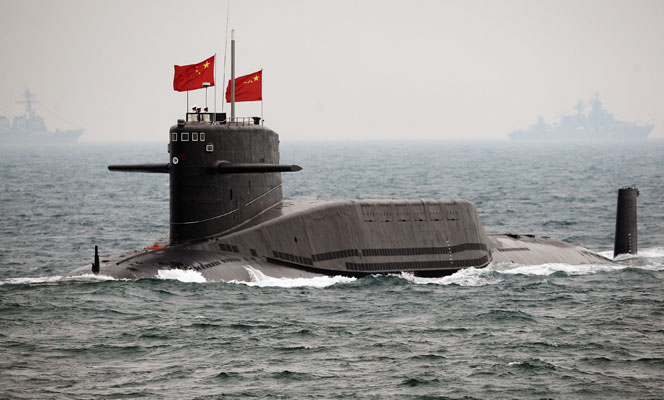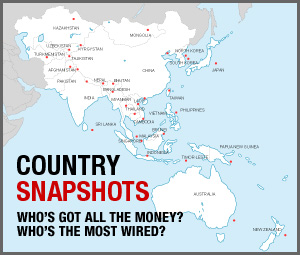The Next Arms Race

Not to be outdone, smaller Asian powers have joined the submarine race. In the early 1990s, South Korea began to build the first of nine modern submarines based on the German Type 209, completing the series within a decade. Seoul recently ordered six Type 214s from Germany to join three boats already in service. Once complete, the Type 214 buy will effectively double the size of the submarine force. South Korea also plans to design and construct nine more next-generation boats from the keel up. Planned for launch in the early 2020s, the new boats will boast double the displacement of the Type 214s and possess the capacity to conduct land-attack missions while submerged. Officially, North Korea is the designated target. However, the blue-water potential of all three classes of submarines continues to prompt speculation that Seoul may be looking ahead to the post-unification era, when some strategists foresee rising tensions with Japan at sea.
Since it acquired two Dutch-built Zwaardvis-class submarines in the 1980s, Taiwan, meanwhile, has been effectively embargoed from further purchases abroad, owing to fierce Chinese opposition to such transfers of sensitive naval technology. In April 2001, President George W. Bush approved a massive, controversial arms sale that included eight diesel-electric submarines. But domestic politics on the island, the reality that the United States no longer builds conventional submarines, and intense Chinese pressure against other third parties have since stalled the proposed deal. While it’s unclear whether Taipei will ever import or build submarines, Taiwan’s apparent persistence and China’s intransigence attest to the perceived value of submarines in a cross-strait contingency.
In Southeast Asia, coastal states with limited financial resources have gradually embraced undersea warfare. In the methodical approach typical of the city-state, Singapore purchased four refurbished submarines from Sweden in the 1990s, honing the operational proficiency of its fleet before committing to buy modern boats. In 2005, Singapore agreed to procure two aging Archer-class submarines from the Swedish Navy. Expected to enter service in 2010, they will be equipped with AIP technology and superior torpedo systems. Its neighbours have also entered the fray. Malaysia acquired Scorpene-class submarines from France, while Indonesia inked purchase agreements with Russia for Kilo-class submarines. Even Vietnam, a country long preoccupied with land warfare, is reportedly negotiating a deal with Russia to import six Kilos.
Farther to the south, Australia has embarked on a breathtakingly ambitious program to replace its six Collins-class submarines, the first of which is scheduled for retirement in 2025. Canberra plans to double the size of its fleet, phasing in twelve next-generation submarines equipped with cruise missiles and AIP systems. The replacements are expected to cost more than $A25 billion over the next fifteen years, making the military modernization effort the most expensive in Australia’s history. Attesting to Canberra’s threat perceptions at sea, Australian strategists cite the rapid proliferation of submarines in Asia as one central rationale for this massive investment.
And no account of undersea warfare in Asia would be complete without India, a rising power with undersea ambitions of its own and a perceived Chinese threat to contend with. Not long ago, a retired flag officer flatly stated that New Delhi cannot tolerate a deployment of Chinese nuclear submarines to the Indian Ocean. What accounts for such candour? India famously sees itself as the foremost power in the Indian Ocean, and it pursues what many in the Indian strategic community forthrightly call a ‘Monroe Doctrine.’ In strategic and operational terms, this means that New Delhi wants to construct (or procure abroad) a navy superior to the largest foreign naval detachment likely to be sent into regional waters. While Indian leaders evince little worry about the US naval presence, seeing it as harmless if not beneficial, China is another matter.
As a result, the Indian Navy is pursuing both SSBNs and SSNs, though with spotty success thus far. On nuclear deterrence, India is at a marked disadvantage vis-à-vis China, which can range all of India with land-based ballistic missiles and has unveiled a submarine base at Sanya, on Hainan Island. (The Chinese Navy now boasts its first viable SSBN, the Type 094. This new fleet boat represents an incremental improvement for Chinese nuclear deterrence vis-à-vis India. For New Delhi, on the other hand, a working SSBN would be a game-changer, letting it hold all of China at risk for the first time.) The performance of the Indian defence-industrial sector has been erratic at best with regard to SSBN-related technology, including naval nuclear reactors, submarine-launched ballistic missiles, and warheads small enough to serve as missile payloads. India will likely sort out some of these problems over the next decade, but even viable Indian SSBNs will have to patrol off the East Asian seaboard to threaten important Chinese targets like Beijing. This will create interesting dynamics in the Asian maritime environment, as Indian SSBNs cruise through the South China Sea and off Chinese shores.
The outlook for nonstrategic submarines is somewhat brighter. The Indian Navy already deploys Russian-built Kilos and is building Scorpenes under contract with the French government, while just this year it unveiled its first indigenous SSN, the Arihant. The boat will undergo sea trials before joining the fleet as a full-up operational unit. As mentioned, the navy has also leased the Nerpa from Russia as a training platform for its submariners, who have had little experience operating naval reactors since the 1980s, when India last leased an SSN from the Soviet Union. How effective will the Indian undersea fleet prove by 2020? Time will tell. Like the Russian Navy, the Indian Navy is the navy of a great land power, albeit a democratic one that sees itself under threat, and thus may exhibit greater staying power on the high seas. Indices to monitor will include (a) the amount of time Indian boats spend at sea, the only way for mariners to become proficient at their craft; (b) reports of accidents, technical deficiencies, or human error; and (c) combat performance, should a conflict erupt at sea.










